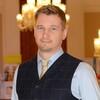Explore all the information on
Enzymes in poultry nutrition
Enzymes are proteins involved in all anabolic and catabolic pathways of digestion and metabolism. Digestive enzymes are categorised as endogenous or exogenous. Endogenous enzymes are produced by the animal and exogenous enzymes are administered from outside. Enzyme supplementation decreases nutrient loss through excreta, reduces diets nutritional levels, improves nutrient availability; thus, enhances production efficiency and profitability. In addition, exogenous enzymes hydrolyse non-starch polysaccharides, increase the usage of feed energy, reduce negative impacts of non-digestive residues on digesta viscosity, and improve gut microbial ecosystem. Cellulase, glucanase, pectinase, xylanase, galactisidases, phytase, non-starch polysaccharides degrading enzymes, amylase, lipase, cellulase, and protease are the most common enzymes used in poultry feed.
Tony Mcdougal, a freelance journalist, once wrote in Poultry World, "The rising demand for eggs, meat, and milk in recent decades has driven higher EU imports of grains and cereals from developing countries with more tropical climates, where the occurrence of mycotoxins is higher—thus raising the prevalence of mycotoxins in EU...
Comments : 0
Recommendations: 1
Introduction Inert digestibility index markers are the anchor of many feeding trials designed to analyse nutrient utilisation and amino acid digestibility along the gastrointestinal tract of animals. Marker use is widely accepted as a method less laborious than total tract retention. Additionally, it enables the determination of digestibility along intestinal sections in ruminant and non-ruminant animals [1]. Digestibility markers, chromium dioxide, CrO 2 , or chromic...
Comments : 0
Recommendations: 2
Evonik's animal feed solutions based on low-protein, amino acid enriched diets make animal husbandry more efficient and help save resources. With a growing global population and rising affluence in many regions, the appetite for meat is picking...
Comments : 4
Recommendations: 1
Aaron Cowieson (DSM) talks about enzymes, amino acids and feed formulation in poultry nutrition, during this Engormix interview....
Comments : 20
Recommendations: 11


Feed Granulometry and the Importance of Feed Particle Size in Layers
Suggested link
Additives are part of the strategies for adding value to food, and their interest, in the current context of raw material prices, is even more evident. Nevertheless, there is a tendency to simplify their action to stick to the primary logic of their nature and easily generate an economic advantage. In doing so, we are likely to limit ourselves by failing to fully consider the scope of their work. In the case of the increasingly popular proteases, this involves a "simple" recovery of the...
Comments : 1
Recommendations: 0
Frank Ivey (Feed2Gain) shares his experience and insights on diet changes, cost savings in formulations, as well as how the impact of enzymes is evaluated, in this Engormix interview....
Comments : 0
Recommendations: 3
Introduction Routine supplementation of dietary Cu, as well as other trace minerals, is intended to prevent deficiencies that originate from the lack of sufficient amounts of this micromineral in the feeds. Copper sulfate (CuSO4) is traditionally utilized as the source Cu of supplementation in poultry feeds because of its wide availability and low cost (1). Total supplemental Cu in commercially formulated broiler feeds is variable, as can be observed in the...
Comments : 0
Recommendations: 2
Pressure on feed cost is and will remain a decisive factor for profitability and sustainability in pork and poultry production. In the backdrop of soaring inflation, other production costs have escalated. Corollary minimizing the costs associated with production has never been of greater importance. Arguably, feed formulation is a precise science that seek to compute combination of feedstuffs to meet the requirement of an animal at least/best cost. Traditionally, the two primary factors that...
Comments : 1
Recommendations: 3
I. INTRODUCTION Exogenous enzymes are susceptible to denature when exposed to low-pH conditions, normally prevailing in the gastric phase. Hence, resistance to low-pH is considered one of the key criterion for the suitability of commercial phytase enzymes for animal feed application. The pH-stability is assessed in-vitro by measuring the recovery of enzyme activity after exposing enzyme protein to low-pH buffers. To mimic gizzard conditions, pH 2.5-3.5 with added pepsin is often...
Comments : 0
Recommendations: 0
A 41-d floor pen experiment was conducted to evaluate the effects of supplementing higher doses (up to 3 times the standard dose of 500U) of phytase (CIBENZA® PHYTAVERSE®, Novus International, Inc.) in broiler chicks fed non-phytate phosphorus (NPP) deficient corn-SBM based diets. A total of 1584 Ross 308 male broiler chicks were assigned to 6 treatments with 12 pens/treatment and 22 chicks/pen. Treatments consisted of T1...
Comments : 0
Recommendations: 1


Effects of Amino Acids on Immune Responses and Gut Health in Poultry
Suggested link
Enzymes have shown promising effects on performance and intestinal health in broilers (Toghyani et al., 2022). However, the dosage effect of enzymes and combination of different enzymes have not been extensively evaluated under the coccidial vaccine challenge condition. Therefore, a feeding study was conducted to examine the effect of dosage of xylanase+glucanase and the effect of its combination with a high level of phytase on growth performance, health, and welfare of broilers under a mild...
Comments : 0
Recommendations: 0
All grains, vegetable-based protein meals and their by-products used in poultry diets contain some levels of phytate phosphorous (PP). Depending on the ingredient type and source, a typical broiler chicken diet would contain between 2.2 to over 3.5 g/kg dietary PP. Research has shown that phytate anti-nutritional effects can reduce the digestibility of amino acids (AA) and minerals. Previously the effect of phytase on AA digestibility was reported in broilers at 21 days of age (Toghyani et...
Comments : 0
Recommendations: 1


Prices Hold, Pressures Build: What’s Moving the Veterinary API Market
Suggested link
Dr. Megharaja Manangi, senior research scientist at Novus International, discussed how producers can improve feed durability and cut costs through post-pellet fat application during the annual International Poultry Scientific Forum (IPSF) at IPPE 2019.
...
Comments : 39
Recommendations: 13
Broiler chickens spend one third of their lives developing inside an egg. Hence, understanding and optimising the in ovo environment is fundamental. The pH of body fluids is tightly regulated to maintain critical physiological functions such as gas exchanges. Enzymes equally have an optimum pH range that determines their efficiency. Changes to these conditions, may impact on the efficiency of O2 transport or enzyme activity. Embryonic development requires a continuous flow of O2 delivery and...
Comments : 1
Recommendations: 1
Determining the right mix of Enzymes is a critical pre-requisite to ensure optimization of Digestibility. With Rossari Biotech, embark on the journey of unraveling the benefits of using the right mix of Enzymes and increase the Profitability....
Comments : 0
Recommendations: 0
Mr. O.P. Singh, Managing Director of ABTL, speaks about the new tagline of ABTL "Where Innovation Meets Technology", and also ABTL's commitment to research & development and its impact on product innovation...
Comments : 0
Recommendations: 2
Mr. O.P. Singh, Managing Director of ABTL, speaks about how ABTL differentiates itself as a leader in providing affordable poultry enzyme solutions...
Comments : 0
Recommendations: 2
Mr. O.P. Singh, Managing Director of ABTL, points out the long term mission and vision of ABTL.
...
Comments : 0
Recommendations: 4
Feed additives have a promising impact on broiler production in improving performance and reducing the incidence of diseases in the post-antibiotic era (Ayalew et al. 2022). However, there are limited data that illustrate the effect of feed additives on broiler performance under necrotic enteritis (NE) challenge. Therefore, this study was conducted to determine the impact of an enzyme (xylanase, 3000 U/kg) and a probiotic (Bacillus subtilis, 2.2 × 108 CFU/g) on growth performance and...
Comments : 0
Recommendations: 1
The positive impact on profitability of intelligent solutions applied to production becomes more important in the face of advances towards intensive breeding with higher demands. These include maintenance, improved farm performance, genetic improvement, environmental improvement, biosecurity and, very importantly, nutrition management. Because feed represents 70% of production costs, coupled with high ingredient prices, profitability and food safety are affected. In seeking to control...
Comments : 2
Recommendations: 0







_1.jpg&w=3840&q=75)






















